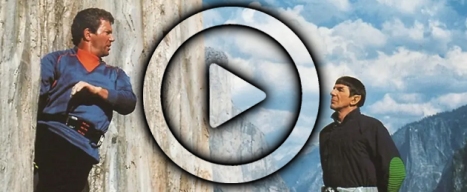Hosted by Andrew Quinn and Darren Mooney, The 250 is a weekly trip through some of the best (and worst) movies ever made, as voted for by Internet Movie Database Users. New episodes are released Saturdays at 6pm GMT.
This week, William Shatner’s Star Trek V: The Final Frontier.
The planet Nimbus III was supposed to be “the Planet of Galactic Peace”, but it has descended into a wretched hive of scum and villainy. From the desert comes a stranger, a mysterious Vulcan named Sybok with an incredible gift for recruiting followers. Sybok has a divine mission. He plans to journey to the centre of the galaxy and speak to God. He just needs a starship to do so. And, to get that, Sybok will be reunited with his estranged half-brother: Spock.
At time of recording, it was not ranked on the list of the best movies of all time on the Internet Movie Database.
Filed under: The 250, The Original Series | Tagged: belief, characters, continuity, eighties, faith, god, imdb, kirk, nostalgia, podcast, religion, spock, star trek, sybok, the final frontier, William Shatner | Leave a comment »





























